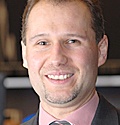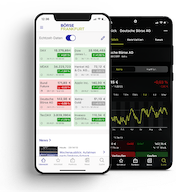Bonds: “Waiting for monetary policy signals and progress in Ukraine”

Today, all eyes are on Jackson Hole, with hopes for news on the future development of US key interest rates. In Germany, demand for new federal bonds remained weak this week. The new JDC bond is proving popular.
22 August 2025. FRANKFURT (Börse Frankfurt). Will the US Federal Reserve cut interest rates in September? Fed Chairman Powell could provide an answer to this question in his speech at the Federal Reserve conference in Jackson Hole, US, today. “This is the dominant topic on the market this week,” notes Gregor Daniel, who trades bonds for Walter Ludwig Wertpapierhandelsbank. Trading remains calm for now. “Investors are waiting for new monetary policy signals from Jackson Hole and progress in the peace efforts in the Ukraine war,” explains Tim Oechsner of Steubing AG.
At the beginning of August, weak US labor market figures fueled expectations of interest rate cuts. However, a significant rise in producer prices then showed that inflation in the US is not yet fully under control. “The market is now pricing in a further interest rate cut by the Fed in September with a probability of ‘only’ around 75 percent,” Deutsche Bank notes.
Noteworthy this week: weak demand for new German government bonds, as reported by Arthur Brunner of ICF Bank. “There was a shortfall in the 30-year bonds,” he explains. “Investors are probably aware that financing requirements are likely to increase significantly if peace is achieved in Ukraine.” The yield on ten-year German government bonds rose slightly this week. On Friday afternoon, ten-year German government bonds were yielding 2.75 percent, up from 2.7 percent a week ago.
“Serious damage if the US Federal Reserve loses its independence”
Concerns about the independence of the US Federal Reserve remain a major issue. “In unprecedented tirades, the Fed's policy has been criticized by the US president, legal action has been threatened, and most recently at least one other FOMC member has been publicly pressured,” explains Helaba analyst Ulrich Wortberg. However, a central bank subject to the will of the White House poses a risk to the stability of price levels, the US dollar, and the bond market. “The potential damage to the economic outlook and the prosperity of Americans cannot be overestimated,” he emphasizes.
Oechsner reports good sales in trading in government and government-related bonds for bonds maturing in March 2026 from the European Stability Mechanism (ESM) currently at 1.7 percent (EU000A1U9944) and Irish government bonds maturing in May 2026 at 1.47 percent (IE00BV8C9418).
Siemens and Eon sought after
In the corporate sector, Daniel sees movement in both directions in the Sixt bond maturing in 2027, which currently yields 2.75 percent (DE000A351WB9). According to Oechsner, bonds from Siemens maturing in 2028 and currently yielding 1.9 percent (DE000A1UDWN5) are in demand, as are Eon bonds maturing in 2029 and yielding 2.59 percent (XS2673536541). John Deere's US dollar bond maturing in 2030 and currently yielding 4.17 percent is also proving popular (US24422EWZ86).

Gregor Daniel
There is brisk trading in bonds issued by the investment company Chapters Group (DE000A4DFK32) on the ICF. The Nordic bond issued by the media and technology company Azerion Group (<NO0013017657>) is also in demand. “The half-year figures were well received. There is speculation as to whether the option of early redemption at 102 percent will be exercised,” explains Brunner.
Purchases for Katjes, sales for Homann and Formycon
According to Daniel, the bond from Katjes International, which was increased at the beginning of August and matures in 2028, is also in demand. At the current price of 105.5 percent, it yields 4.85 percent (<NO0013627927>). “The new tranche is to be merged with the previous one (NO0012888769) around September 24 and absorbed into it,” he explains.
On the other hand, the bond issued by Homann Holzwerkstoffe in June with a maturity date of 2032 (NO0013536169) is on the sales lists. With prices at 104.75 percent, the yield today is 6.61 percent. “That looks like profit-taking,” Daniel remarks. On the other hand, the Formycon bond (NO0013586024), also new and issued in July, is trading at 98 percent. “Sales in the first half of the year were probably in line with market expectations, but the biosimilar developer is burning through a lot of money,” he notes.
The new bond from Wiesbaden-based insurance financial services provider JDC Group (NO0013618587) is in high demand, according to traders. The Nordic bond pays interest at the three-month Euribor plus 4.50 percent, has a four-year term, and can be increased to up to €160 million.
By Anna-Maria Borse, 22 August 2025, © Deutsche Börse AG
About the Author
Anna-Maria Borse is a financial and business editor specializing in financial markets/stock exchanges and economic issues.
Feedback and questions to redaktion@deutsche-boerse.com





